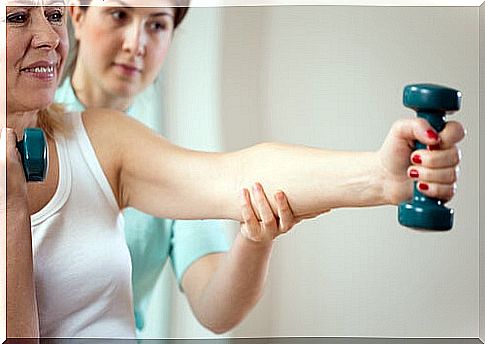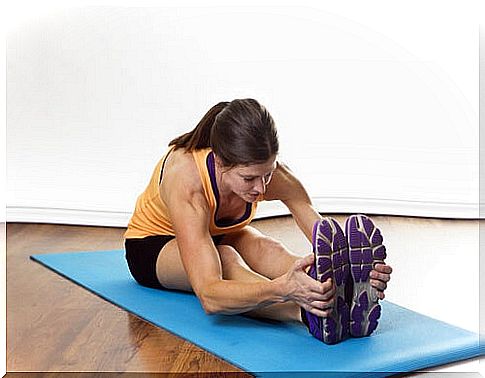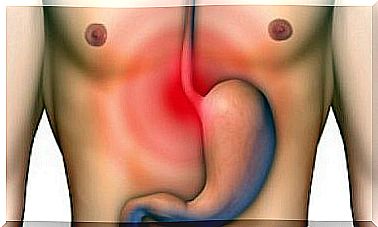4 Types Of Exercises To Prevent And Combat Osteoporosis
Fighting osteoporosis is one of the main struggles of medicine. Preventing it is also part of this conquest.
Osteoporosis is a chronic disease caused by the decrease in bone mass. This makes the bone weak and susceptible to fractures.
Many people may be suffering from it right now without knowing it. In general, in its early stages it goes unnoticed and there are usually no strong symptoms that allow suspicion of it.
There are many factors that can influence the development of this pathology. In most cases it occurs due to old age or also due to genetic reasons.
The truth is that currently there are many ways to prevent and treat it so that it does not take advantage and affect the quality of life.
Although rest is recommended for pain, all treatments recommend to be complemented with the practice of some low-impact exercises to improve their results, as indicated by various studies.
On this occasion we want to share those types of activities that those who have to fight against this disease can carry out.
It is very important to do them with medical authorization or with the support of a professional trainer. A bad move can have serious consequences. Are you ready?
1. Cardiovascular exercise to combat osteoporosis

Cardiovascular or aerobic exercise has many benefits for general health. In addition to boosting heart activity, they also help burn fat and strengthen muscles and bones.
In the case of people with osteoporosis, moderate performance of low-impact activities is recommended, such as:
- To swim.
- To walk.
- Dance.
- Work on an exercise bike.
- Get around on the elliptical machine.
However, it is always necessary to consult with the doctor in advance, as advised by the Mayo Clinic, so that the specialist indicates the appropriate activity, based on bone density and physical fitness.
2. Resistance exercises to combat osteoporosis

For this type of movement it is essential to have an advisor or expert. These will help you consider which machines and exercises are most suitable depending on the degree of the disease.
At a general level, it is recommended to work on machines that improve muscle strength, or to perform home exercises for the same purpose, especially those that have to do with the work of the lower back, taking into account that fractures in the bones of the back they are very common, for which the utmost caution is required.
Osteoporosis directly affects the spine. It is relevant to reaffirm the surrounding muscles to improve their support.
We must be very careful when practicing these exercises, since for no reason should they be excessive and each movement must be done correctly.
Among the suitable exercises are:
- Leg raises.
- Pelvic elevation.
- Lifting weights or dumbbells.
- I work on the gym machines (only with professional advisor).
3. Balance exercises to combat osteoporosis

When a person receives the diagnosis of osteoporosis it is very important that they begin to strengthen their balance, since any fall can lead to a serious fracture, such as a hip fracture. In the opinion of the experts, balance is essential in this type of patient.
With age, stability is usually lost when walking and even when standing. It is recommended to practice some balancing and balancing movements:
- Hold one of the legs back and try to maintain stability for 15 seconds.
- Walk backwards or to the sides in a smooth place, taking at least 10 steps.
- Draw a line and walk on it, on the balls of your feet.
4. Stretching exercises to combat osteoporosis

Stretches are an excellent complement to the previous movements. They help to enhance flexibility to improve posture and avoid dangerous falls, as various studies recall.
Help strengthen joints and muscles These types of activities also help us protect bones to prevent fractures.
Depending on the severity of the disease, each patient should have a stretching plan recommended by their doctor.
However, at a general level, it is almost always advisable to respect the following:
- Do the stretch statically, maintaining position. No bouncing or jerky movements.
- Take a deep breath and breathe out to help the muscle stretch.
- When you “pull” the muscle and feel the slight pressure, try to hold your posture for a few seconds.
All these exercises should be included in a plan to act against osteoporosis. However, it is absolutely necessary to consult your doctor beforehand. Given the delicacy of the disease, some movements are not suitable.
As a complement, it is also essential to improve the diet, basing the diet on those foods rich in vitamins and minerals, especially calcium and magnesium.
Receiving the diagnosis can encompass many fears due to the consequences that it implies, but adopting a healthy lifestyle can be overcome in an adequate way. Cheer up!









